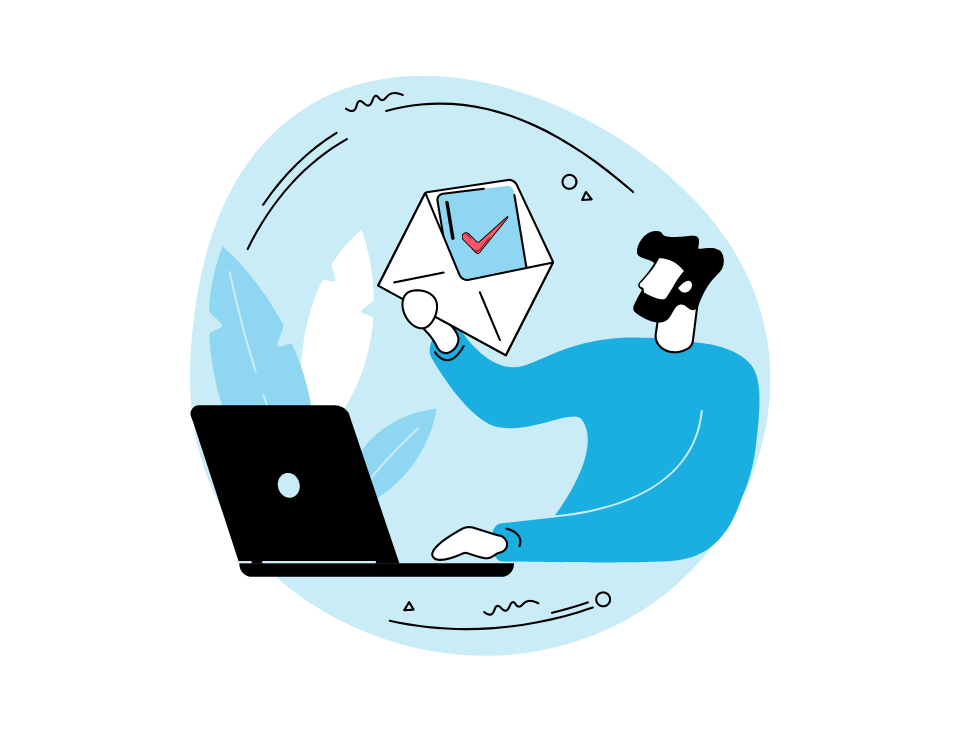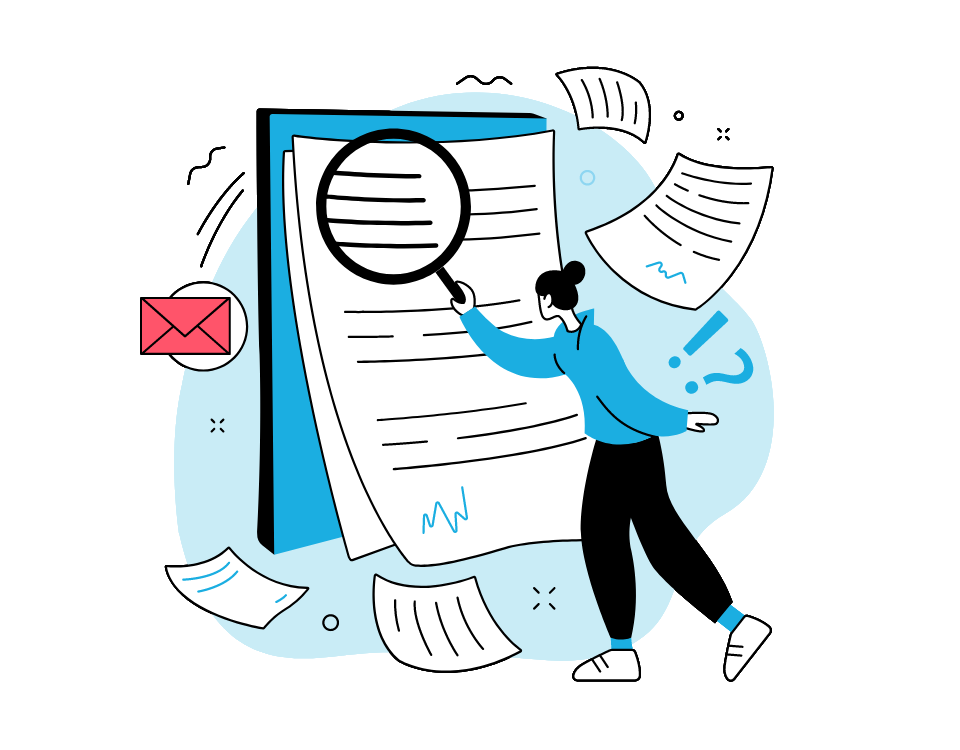![[POSTALYTICS] Direct Mail Marketing 30 Expert Tips and Insights on How to Deliver a High Converting Direct Mail](https://www.postalytics.com/wp-content/uploads/2018/02/POSTALYTICS-Direct-Mail-Marketing-30-Expert-Tips-and-Insights-on-How-to-Deliver-a-High-Converting-Direct-Mail-1024x536.png)
Direct mail has been making a comeback. With powerful tools like Postalytics to help streamline the process, now is the time to be sending direct mail.
Even with Postalytics helping to speed up the standard production time of direct mail, there are still many tips and tricks to keep in mind while building a campaign. There are many important factors to be implemented that can help a direct mail campaign succeed.
*Note: This list is in no particular order.
What We’ll Cover:
- Gather an Effective List
- Choose an Effective Medium
- 6. Self-mailers provide more room for creativity and give a sense of wanting to share with others.
- 7. Postcards are cost-effective.
- 8. Achieve greater open rates with dimensional mail.
- 9. Letter packages can be more costly but also effective.
- 10. Catalogs that showcase the company’s products can entice viewers.
- 11. Choose a postcard size that will stand out.
- Write Engaging Content
- 12. Have a compelling call to action.
- 13. Highlight and call out the most important content information.
- 14. Tell a compelling story.
- 15. Keep your content simple and straight to the point.
- 16. Draw the audience online.
- 17. Write a P.S at the end of your content.
- 18. Include personalization.
- 19. Always proofread.
- Create a Compelling Design
- Strategic Follow Up
Gather an Effective List
1. Present an offer to entice people to sign up to your mailing list.
“Use promotions, newsletters and incentives to encourage people to sign up for your mailing list. By offering a free product, service, or a sizable discount, you can gather information for your direct mail campaigns. The quality of your list matters. Gather information including, name, gender and mailing address at minimum. If you can collect demographic information, that’s even better but be aware that the longer the form to fill out, the less likely a person is to complete it.”
— Tips to Build a Strong Direct Mail Database, Bill Nee, Preferred Direct; @PreferredDirect
2. Target your list to a specific demographic.
“Whether buying or renting a list, you should try and make it as targeted as possible. The first step is to sort through the basic demographics of your target audience like age, gender, income, etc. You should then check with the list company to see what other targeting options are available. Some list companies provide micro-selects which may come in useful here. Micro-selects are high level models of consumer tendencies. An example of a micro-select would be “propensity to eat at an Italian restaurant”. While not 100% accurate, micro-selects are a very valuable indicator of consumer behavior.”
— 8 Direct Mail List Tips and Best Practices, Dennis Kelly, Postalytics; @Postalytics
3. Use a list broker.
“List brokers have a wealth of knowledge about mailing lists that can make the task of selecting the right list much easier. They can also help you negotiate lower list-rental rates, which is a real benefit since renting lists can be expensive. List brokers offer one-stop shopping for mailing lists, and they’ll save you time and money.”
— How to Find the Right Mailing List, Craig Simpson, Entrepreneur; @SimpsonDirect, @Entrepreneur
4. Determine if you will receive a data guarantee.
“Before paying for a list you should check if the company is willing to give you a guarantee over delivery rates. List companies offer guarantees like refunds for returns over a certain percentage or free records for excessive returns. You should also tell the company that you plan to mail the people on the list using first-class mail because, with first-class, the postal service is required to send returns. It is highly unlikely that you will use first-class when you consider the costs involved, but, this way, the list company should provide you with the actual expected return rate.”
— 8 Direct Mail List Tips and Best Practices, Dennis Kelly, Postalytics; @Postalytics

5. Mail yourself a copy of the direct mail.
“Always send a mailer to yourself so you can see exactly what it looks like after going through the full mailing cycle. Nothing takes the place of firsthand observation and you want to make sure your direct mailer is as perfect when it’s in your customers’ hands as it was when it was first printed.”
— Top 10 Tips for Effective Direct Mail Design & Production, Fridge; @TheFridgeAgency
Choose an Effective Medium
6. Self-mailers provide more room for creativity and give a sense of wanting to share with others.
“Self-mailers are often selected because of their relatively low production costs. By definition, a self-mailer is mailed on its own without an envelope. This means it is printed and mailed as once piece (instead of multiple pieces in a direct mail package) which saves on printing and mail inserting costs.
Self-mailers are also selected because they are more likely to be passed around the office or the home. Personalized letter packages are almost never opened and read by anyone but the addressee. But because self-mailers look less personal, business colleagues and family members are not uncomfortable with looking at someone else’s mail. This pass-along effect can increase readership and response.
Finally, many people choose self-mailers because they seem to offer more creative opportunities – with more photos and more graphics.”
— Tutorial – Direct mail formats: How to choose the right mailer, McCarthy & King Marketing, Inc; @BobMcCarthy
7. Postcards are cost-effective.
“Often the most economical, postcards are very effective in direct mail. The prospects’ addresses will appear on the front and the offer is usually on the back. A postcard would be perfect for your business’s direct mail marketing if you want to arouse interest in an offer that can quickly entice the viewer to take further action like visit your website or call your office. According to data, postcards get the highest response rate of 4.25%.”
— The Ultimate Guide To Boosting Your Direct Mail Response Rate, Ballantine; @ballantinecorp

8. Achieve greater open rates with dimensional mail.
“Dimensional mail has a much higher opening rate than traditional direct mail, and it’s easy to see why. A mail package with something lumpy inside will spark the curiosity of the person receiving it.
Dimensional mail can be used very successfully by small businesses targeting a small customer file. If you’re looking for a high response from 500 to 1,000 people and you can afford a higher mailing cost, then dimensional mail is definitely the way to go. It will get the customers’ attention and get them to respond.”
— 6 Attention-Grabbing Direct Mail Designs, Craig Simpson, Entrepreneur; @SimpsonDirect @Entrepreneur
9. Letter packages can be more costly but also effective.
“A classic package is sent in an envelope, which contains a letter and a response device (i.e. order form or business reply card). The package may also include flyers, brochures or other information. The letter is considered the most important part of the package, creating the “first impression” on a potential customer. It is often even more effective to do a personalized direct mailing, which means that each letter will be addressed to a specific individual and mention details or promotions specific to them.
Classic packages are widely considered to be one of the most effective types of direct mail but are often also one of the most expensive options because of the multiple materials that need to be printed and organized. Shipping can play a factor as well since the classic package can weight more than some of the other options. It is a good idea to make up several mock-ups to ensure that the weight of the package remains under one ounce in order to get the lowest postage rate.”
— Types of Direct Mail, Salt lake Mailing & Printing; @slmail

10. Catalogs that showcase the company’s products can entice viewers.
“Catalogs are perfect for companies that offer multiple products. You should place your popular items in the front pages to entice your customers to keep flipping through your catalog. Most companies prefer to send catalogs to existing customers. Catalogs vary in size and can be custom-designed to suit your company’s specific needs.”
— Types of Direct Mail, J.M Field Marketing; @jmfmarketing
11. Choose a postcard size that will stand out.
“Imagine what your finished piece is going to look like stacked in a home or office mailbox. Consider using an oversized postcard that could almost wrap around everything else delivered that day. With some of the new programs from the USPS, you can mail a postcard up to 12″ by 15″. If going with a smaller printed piece, consider the thickness of the stock you are using and if it will hold up against the rest of the competition for mailbox space.”
— 8 Tips For Better Direct Mail, Cedar Graphics; @cedargraphics

Write Engaging Content
12. Have a compelling call to action.
“A call to action, or CTA, is a line of text that prompts your reader to take an action. It’s crucial to include a call to action in your direct mail piece to guide your readers to the next part of your sales process. Examples of calls to action that you can include are, “Hurry, Call Now!”, “Mail Your Donation Today”, “Schedule an Appointment”, “Scan this QR Code” or “Visit Our Website to…”. Make your call to action short, easy to understand and one of the most prominent pieces of text on your direct mail piece. There should also be a level of urgency to respond. Deadlines, limited time, limited quantities or gifts help facilitate response.”
— 6 Tips For More Effective Direct Mail Pieces, Larissa Montecuollo, Trillion; @trillioncreates
13. Highlight and call out the most important content information.
“Emboldening, underlining or italicizing words can help draw the readers’ attention to the parts that matter most. Don’t go wild making every other word bold, otherwise people may lose interest altogether. Think: if the recipient is only going to read one bit, which sentence or few key phrases would you want that to be?”
— 10 Writing Tips for Your Direct Marketing Campaign, Clare Sutton, HubSpot; @HubSpot
14. Tell a compelling story.
“One technique to make a sales piece interesting is to play up “the story.” It could be the story of the person who developed the product. Or the story of someone who used the product and whose life was changed as a result. The idea is that the reader identifies with the person in the story, becomes involved enough to keep reading to find out what happened, and comes to the conclusion, “I’m just like that person, and there’s no reason I can’t have the same experience using this product.” ”
— 5 Tips for Producing Direct Mail Copy That Sells, Craig Simpson, Entrepreneur; @SimpsonDirect @Entrepreneur

15. Keep your content simple and straight to the point.
“Focus on simplicity – Keeping your language simple should be your starting point with any piece of copy. So opt for short paragraphs, bullet points and the use of sub headings to create a great structure to scan.”
— 7 Tips for Awesome Direct Mail Copy That Sells, Scott De Buitléir, Huffington Post; @scottdebuitleir, @HuffPost
16. Draw the audience online.
“Always include website and/or social media information. A lead that is not willing to act at the moment may be willing to further explore a company if given the chance to do some online research. Keep your online marketing strategy strong to promote crossover lead nurturing.”
— How to Write Great Direct Mail Content, TMR Direct; @TMRDirect

17. Write a P.S at the end of your content.
“The postscript is one of the most read parts of direct mail. After the address and initial headline, people tend to skip straight to the end, so include something that will seduce the recipient to go back to the beginning and read the whole thing.”
— 10 Writing Tips for Your Direct Marketing Campaign, Clare Sutton, HubSpot; @HubSpot
18. Include personalization.
“Personalization is one of the most powerful tools in direct mail. Each of your direct mail pieces can be personalized to appeal to the preferences of the recipient. Examples of personalization include letters that include the recipient’s first name in the salutation; or a not-for-profit referencing how much a donor has given in the past and encourage them to increase their donation amount by a specified percentage. Personalization can be in the form of text and even images. It can be as specific as sending a postcard with the exact make, model or color of a car that was recently test driven by the recipient at a car dealership. The variety of personalization depends upon the amount of relevant data you have. The more data you have on your recipient’s preferences, the more you can customize each direct mail piece and connect on a more emotional level.”
— 6 Tips For More Effective Direct Mail Pieces, Larissa Montecuollo, Trillion; @trillioncreates
19. Always proofread.
“One of the most common and costly mistakes with direct mail campaigns, whether you are looking for postcard printing or a 30 page brochure, is failing to proofread your materials carefully before they go through the printing process. Even a single misspelled word or sentence with poor structure can cast doubt on your professionalism and company image.”
—10 Costly Mistakes to Avoid With Direct Mail Campaigns, Las Vegas Color Graphics; @printervegas

Create a Compelling Design
20. Select images carefully and don’t clutter the direct mail piece.
“Use images wisely and choose wonderful works that really work – Images are great for bringing your words to life, however you should be careful not to overcrowd your flyer: opting for one powerful image is better than choosing numerous smaller images that all jostle for attention. The power of visual communication is extremely important and quality images establish credibility and are the most important factor in discerning the credibility of materials.”
— 7 Tips for Awesome Direct Mail Copy That Sells, Scott De Buitléir, Huffington Post; @scottdebuitleir, @HuffPost
21. Don’t forget to design the back of the postcard.
“For postcards, always use both sides. The address side of the card is an often-wasted opportunity to hook viewers and make them want to know more.”
— 16-Plus Design Tips to Make Your Direct Mail Shine, Target Marketing; @targetmktg
22. Simplify your design.
“Be clear and don’t clutter your message up with unnecessary design elements. A beautiful shot of a flower or a piece of furniture is as compelling as 10 tiny images that are so small a reader doesn’t know what they are.”
— A Guide on Designing For Direct Mail, Ballantine; @ballantinecorp

23. Keep your brand consistent.
“In terms of your direct mail, use your logo consistently on every component you create. When your customers bring your coupon into the store, make sure they see the logo that’s on the coupon on the store signage.
Keep the tone of your text consistent with your other communications. It’s all part of your brand – it all represents you!
The visual components of your design provide the initial impact of your mailing. Typography, your color scheme and use of white space and images all contribute to making your piece the one your prospects respond to.”
— A Guide on Designing For Direct Mail, Ballantine; @ballantinecorp
24. Make sure your images are high-resolution.
“Nothing screams ‘cheap’ like pixelated artwork on a direct mail. No matter how good they may appear on-screen, you need to make sure your graphics have a large enough resolution if you want them to turn out looking great on paper as well. A printed flyer, for example, requires images which are at least 300 dpi.”
— 7 Tips for Creating a Dazzling Direct Mail Design, Xeikon; @Xeikon
25. Utilize white space.
“Remember that an area of white or a block of color can be as important as an area with text and an image. The goal isn’t to fill up the space; the goal is to use it to get your message out.”
— A Guide on Designing For Direct Mail, Ballantine; @ballantinecorp
26. Create visual contrast.
“Do strive for contrast and balance. Dark against light, opposite colors and large elements juxtaposed with smaller ones create contrast which attracts attention. Keeping the weight of elements relatively distributed on the card creates balance and pleases the eye, as do elements of similar tone or size.”
— Postcard Design Tips, Printing For Less; @printingforless

Strategic Follow Up
27. Include contact information so they can reach you.
“The contact information and order details that you provide on materials used for your direct mail campaigns should include options for the reader. Some may prefer to contact you or order online, others may prefer the telephone, and some people will want to use old-fashioned snail mail even in this modern age of technology. Give consumers options for a better response.”
—10 Costly Mistakes to Avoid With Direct Mail Campaigns, Las Vegas Color Graphics; @printervegas
28. Give the mail recipients a call.
“One of the easiest and most effective ways to follow up a direct mail campaign is to go down your list of recipients and call each one up personally. Though this will require time and manpower, it will also show your customers that you really care about their business and that you’re not just another faceless company.
Calling potential customers to discuss your products and their reaction to your direct mail campaign offers you a great opportunity to do a bit of brand PR. The more charming, communicative, and engaging you are, the more likely the person you’re talking to will remember your company and choose your brand in the future.”
— How to follow up on your direct mail campaign, Karl, Fiala Print & Mail Direct Mail Solutions; @fialaprint
29. Send additional direct mail.
“Another option is to follow up your direct mail marketing campaign with another direct mail campaign. A week or two after sending out your first round of promotional materials, you could send out flyers reminding your customers of your offers. You could even let them know how many promotional products or offers you’ve sold in order to motivate them to take advantage of the deal themselves.”
— How to follow up on your direct mail campaigns, Karl, Fiala Print & Mail Direct Mail Solutions; @fialaprint
30. Email follow up.
“Email is a natural follow up to direct mail. For example, if a direct mail piece is delivered to your prospects early in the week, you can follow up later in the week with an email reminding them of your offers. The email can reference the message you provided in the direct mail piece, provide additional follow-up information, and include either a link to a landing page, or a PURL for a personalized experience as described previously.”
— 3 Effective Ways To Enhance Your Direct Mail Campaigns, Ballantine; @ballantinecorp
About the Author

Dennis Kelly
Dennis Kelly is CEO and co-founder of Postalytics, the leading direct mail automation platform for marketers to build, deploy and manage direct mail marketing campaigns. Postalytics is Dennis’ 6th startup. He has been involved in starting and growing early-stage technology ventures for over 30 years and has held senior management roles at a diverse set of large technology firms including Computer Associates, Palm Inc. and Achieve Healthcare Information Systems.
